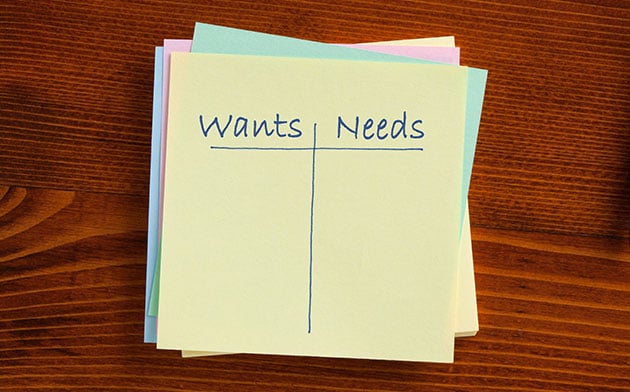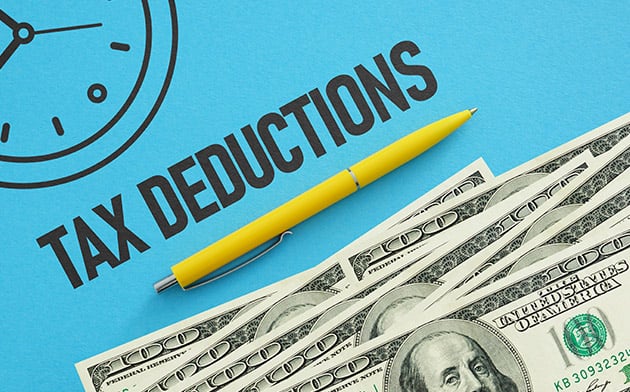The end of the year (or beginning of a new year) is a great time to take a look at your household’s budget and start planning for the new year.
Whether you’re creating a new budget from scratch or reviewing previous months’ expenses, it’s helpful to consider if those expenses fall into the category of a want or a need.
What’s the difference?
First, let’s define the difference between a want and a need.
- A want is an item that can improve your quality of life but isn’t necessary to live. This category will vary from person to person, but common wants include getting drive-through coffee, streaming services, and travel.
- A need is something that is necessary to live and function. (Think: food, clothing, shelter, pet expenses, and medical care.)
When creating a budget, these terms are a bit more fluid than they appear at first glance. While working through your lists, you may find that some items can fit into both categories.
A good trick for separating wants from needs is to let some time pass before purchasing the item. The desire to obtain a need only grows stronger as time passes, while the desire to fulfill a want may weaken with time.

List out your wants and needs
When budgeting, start by listing your needs and including the basics, like food, rent, or mortgage, as well as other fixed expenses necessary for you to live your life. Those things may include transportation costs, insurance, and clothing or tools you need for work. Needs will vary from one person or family to another, and there’s no catch-all list that applies to every situations.
If you get stuck and don’t know how to classify a cost, consider the following questions:
- Do I need this item to live and function?
- Is it possible to fill this need in a less expensive way?
- How would my life be different if this item were not a part of it?
Reviewing and adjusting your lists
After listing your wants and needs side-by-side, review each list carefully and adjust as needed. For example, if you realize your wants include numerous items in the same category (like streaming services), consider if you use all of those services or if you can reduce expenses by eliminating services you don’t use. If one of your budget goals is to save more money, pare down your lists until you’re left with wants that truly add value to your life.
Creating your monthly budget
After you finalize your lists of needs and wants, you can create a simple monthly budget that assigns a dollar amount to each of your needs, sets aside money for savings, and helps determine how much is left each month to pay for your wants.
Going forward, you’ll likely also have an easier time keeping your impulse purchases under control. Before purchasing an item, ask yourself if it’s a need or a want. If the item is a want, consider its importance and how it stacks up against your other wants before going ahead with the purchase.
Separating wants and needs and being critical of your own spending habits can be challenging. But once you have a solid understanding of each, your budget can fall into place around each item. By being responsible with your spending, you can still leave some room for the things you really want in your life.


